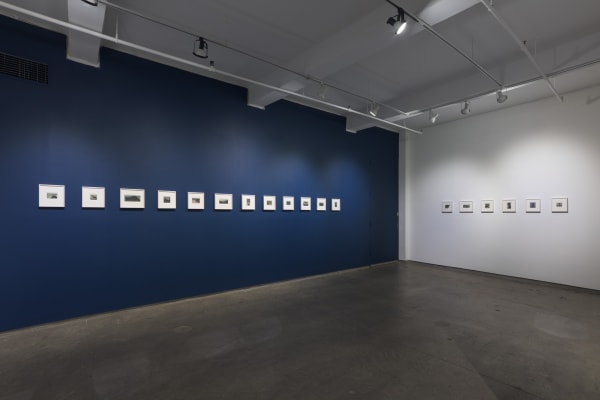Leopold Strobl: Views: Gallery Two
Strobl was born in Mistelbach, Lower Austria in 1960. He has devoted himself exclusively to art for almost 40 years, and has been a guest of the Open Studio program at the Gugging Art Brut center in the outskirts of Vienna for more than 16 years. He draws in the morning and single-mindedly finishes a new piece per sitting. Strobl’s works are generally no bigger than 8 ½ inches on the longest side and can be almost as small as a postage stamp; they come to the artist as little visual epiphanies and strike the viewer with this poetic immediacy.
Strobl's process is a seamless, multilayered appropriation and alteration of a photographic base. It starts with combing through the local newspapers for evocative images that will lend themselves to the transformation that is to come. Strobl then scissors these images out of their original context and backs them with clean drawing paper. We know the steps that follow and the simple materials utilized (graphite and colored pencils), but not in what order, or if there is one—as the artist doesn't speak of it or allow onlookers when he is working. Strobl's compositions are generally encased in a drawn internal frame that is either very subtle (delicately enclosing each scene with rounded corners) or partially amorphous, covering large areas like a spill or a flood. Depending on the disposition of the underlying clip, he traces over certain outlines—topographic features, horizon lines, architectural details, winding perspectival lines--and if there are figurative elements that don't fit into the artist's vision, he encloses them in graphite, like an insect spinning a cocoon, or a minimalist reducing a representational image into a basic shape.
What might have been a person about to mount a horse, a family canoeing down a stream, superheroes running beneath an underpass, a polar bear about to walk across a large expanse, a rhino grazing a pasture, three bears emerging from a river, a stork guarding her nest, boats floating in the ocean, or a spread-winged eagle in mid-flight, all become petrified, ghostly presences in Strobl's realm. This is, however, more a process of incorporation than it is one of elimination: the shapes remain heavy with the figures they have covered, with the motion they have frozen, and the "noise" they have silenced, but they become a conduit that merges any trace of human narrative into the landscape that it once sustained. A "classic" Strobl work, elegant in both execution and subject, will often feature shrouded human figures literally transformed into a graphite topography; lone peaks or sinuous curves against luminous green-blue skies. The artist is a perceptive colorist and imbues his world with shades green, gray, yellow, blue, and ivory white—blending and layering pigment onto large areas with an eye toward the existing texture and light in the underlying photograph—so that ultimately, we don't know where the artist's touch ends and the found image begins.
Click here to visit the online viewing room for this show and learn more about the works exhibited.





